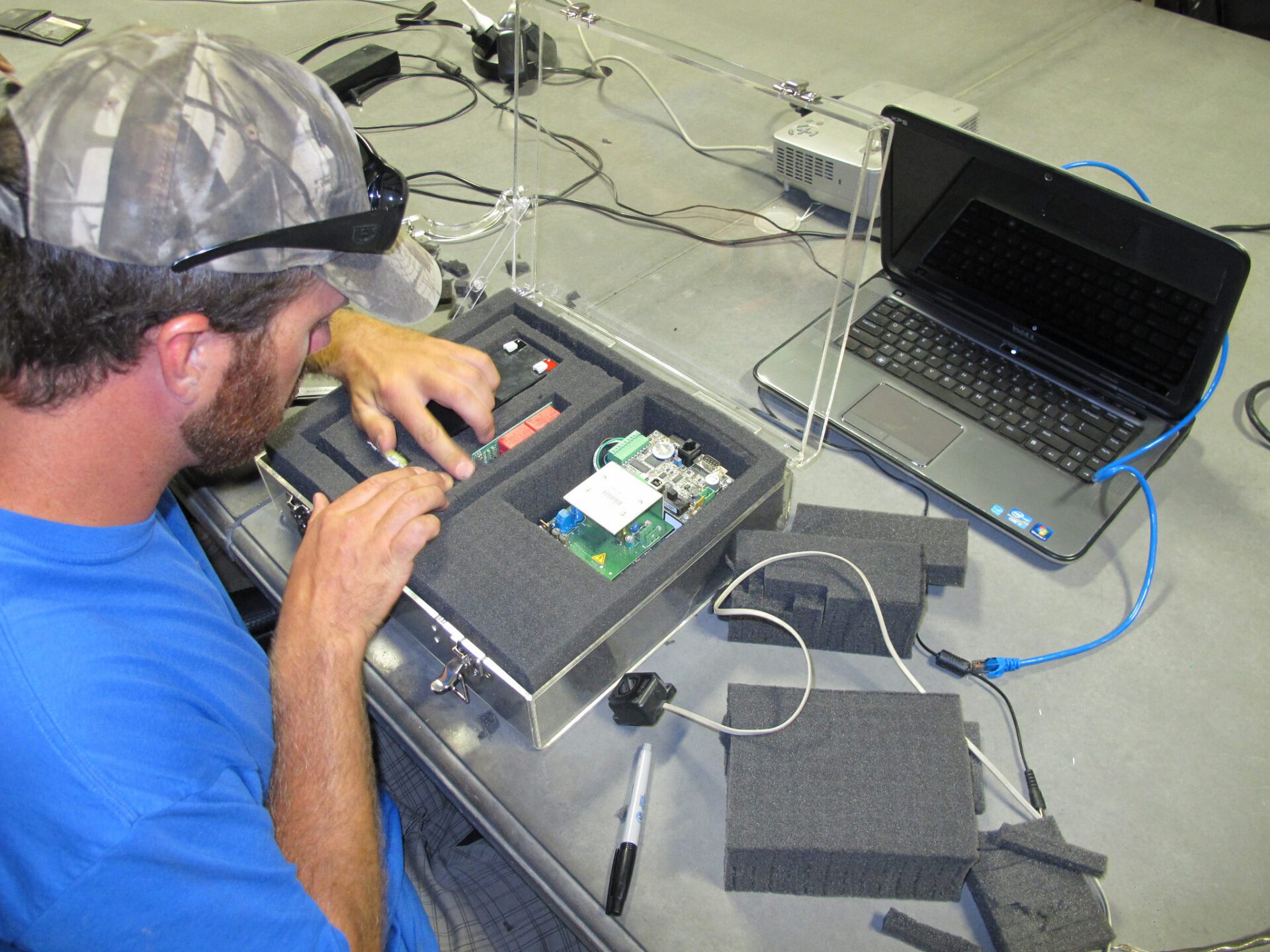Wednesday November 12, 2014

When it comes to fisheries technology, we like to think that if you can imagine it, we can build it. So when we wanted to show people in Laos firsthand the kinds of technology that we use in the United States, it seemed only natural to turn to the creativity of our FABLAB. One of our proudest accomplishments is the construction of two largest-of-their-kind PIT tag antennas that withstood heavy flows to monitor fish entrainment in a pair of water diversion tunnels. For teaching purposes in Laos, our fabricators replicated the same fiberglass framework of these giant antennas – just scaled it down several notches!
They constructed a miniature PIT tag antenna out of copper wire embedded in a frame of clear epoxy resin, which allows people to see the wires to understand how the antenna works. The antenna hooks up to a 12-volt battery, as well as a tuner that can be used to change its frequency, like a tuner in a car radio. The antenna’s reader records the data received from passing tagged fish, and can be hooked up to a computer to download the information. Though this demo model is a fraction of the size of the antennas it was modeled after, we’ve built antennas of this small size before to monitor fish passage in narrow spaces, such as drain pipes or fish ladders.

Our master fabricator recently traveled to Laos with the demonstration antenna in tow, and trained our Lao biologist in how to assemble the antenna and explain to people how it works. He even provided a plastic fish with a PIT tag embedded in it to complete the set-up, and packed the whole thing in a padded traveling case. A PIT tag antenna could theoretically be built out of any material that can hold the antenna’s shape in place (to maintain its frequency) – whether PVC pipe or bamboo. We think this technology has incredible potential for improving the study of fishes in the Mekong Basin, and it may just be a matter of time before they start popping up in the region.

